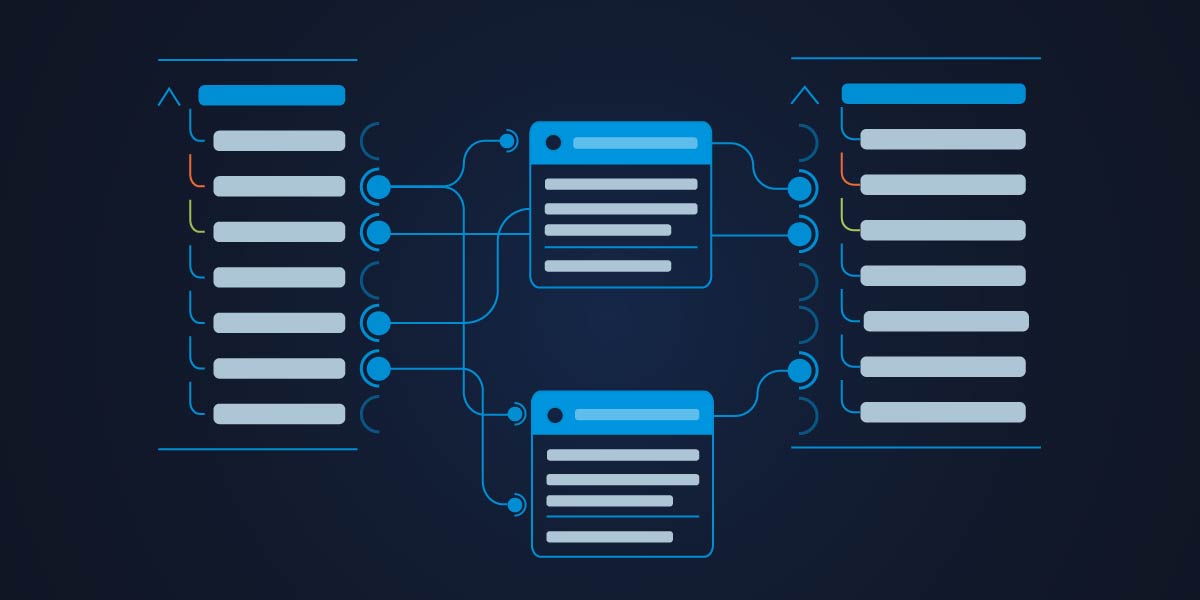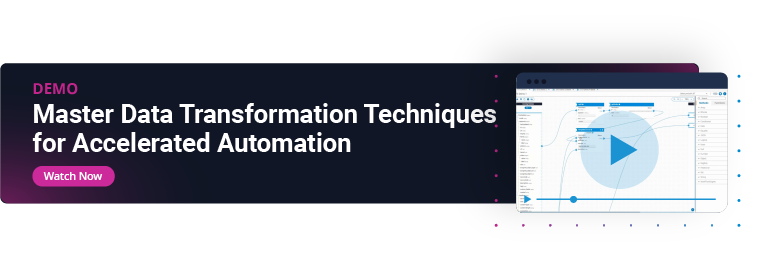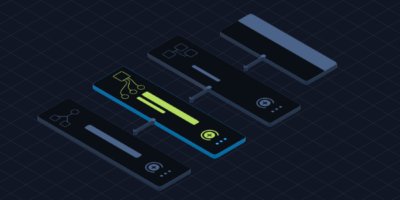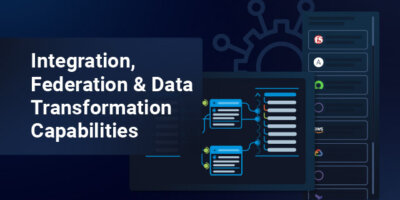Network orchestration has become a key priority for businesses in today’s digital age. Organizations are looking to accelerate by streamlining operations and enabling connectivity across complex, multi-domain, multi-cloud network infrastructure.
However, coordinating end-to-end processes that involve multiple API calls poses unique challenges. Different systems, especially those for different network domains or built by different vendors, often work with different data formats. Taking the output from one system and providing an input to another very often requires data manipulation. If this has to be done manually, network teams can’t fully implement orchestration to automate an entire process end-to-end.
It’s imperative that your network orchestration platform provides capabilities for automating data transformation. Itential’s patented approach allows for universal data translation by translating specific data models into a common JSON format, allowing orchestration between any systems and platforms by enabling the smooth flow of data.
Why Is Data Transformation Important?
Modern network and infrastructure change workflows often span multiple systems and platforms from a variety of vendors, each with their own data formats and protocols. This diversity poses a significant challenge, as organizations grapple with the need to ensure smooth data flow across disparate technologies. Manual data manipulation between systems not only introduces delays but also increases the likelihood of errors, hindering operational efficiency and agility. To continue accelerating infrastructure to match the pace of business, automated data transformation that works across everything in your stack is a requirement.
To address these challenges effectively, organizations must equip their teams with tools that streamline workflows and automate data translation seamlessly. This entails the ability to build data transformation tasks without requiring extensive coding expertise, empowering network engineers to focus on strategic initiatives rather than tedious manual tasks. By enabling teams to automate data translation between systems, organizations can accelerate their automation initiatives and drive efficiency across their networks.
Another crucial aspect is the modularity of the solution. Modular design allows organizations to create reusable transformation tasks that can be leveraged across various workflows and use cases. This approach reduces redundancy and promotes collaboration within teams, fostering innovation and efficiency. When data transformations can be automated and treated as reusable assets, it allows everyone in the network team to move faster and become more productive.
Data Transformation in Itential
Itential is committed to making network orchestration fast, easy, and practical. Instead of a prescribed data model, we leverage JSON objects and infer JSON Schema to enable coordination between different API calls. We use JSON instead of a specific data model because this flexibility is a requirement for network engineers to practically use our platform for everything. It’s not on us to tell you what systems to use or which equipment vendors to buy devices from. Our job is making sure you can orchestrate across everything no matter what.
If you’re a network engineer building a workflow in Itential, it’s a quick step to add a data transformation in between two API calls to translate output data from the first call into the required format for the input of the next call.
Let’s say you have a workflow where, at some point in the process, you make an API call to NetBox to get the IP address, and then you need to use that IP address to configure a router port. If you run that NetBox API call just once, you generate a JSON object that contains all the variables and the associated output. Then, you can create a new Transformation, paste in that JSON object, and watch as Itential infers the Schema from that object and presents all the possible output variables in a visual list. Then, you can drag-and-drop from the IP variable over to the output of the Data Transformation, which will be used as the input of the next automated task in your workflow.
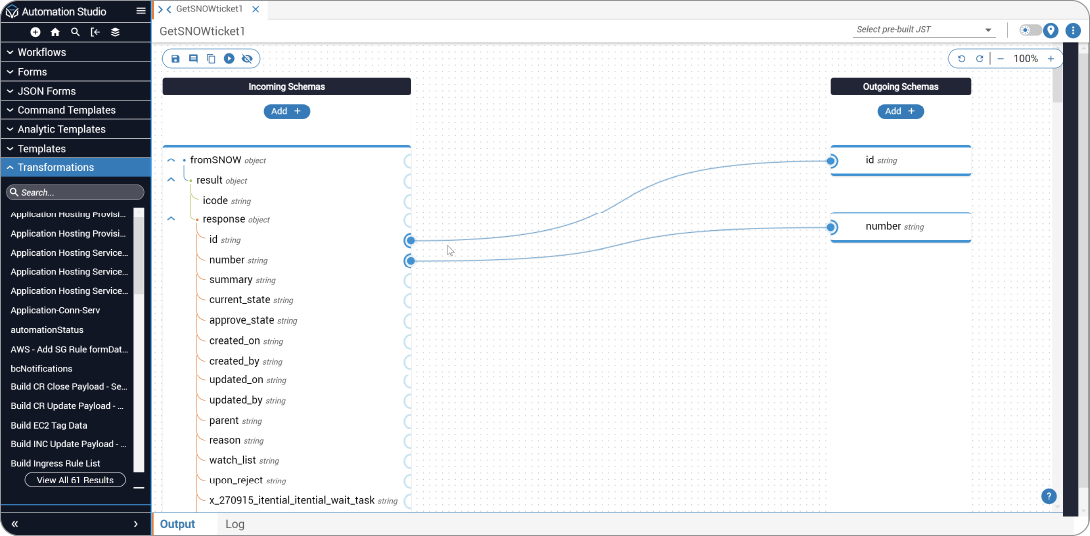
Transformation is more than this, though. You have access to a variety of methods which you can run on the data you’re pulling from the first API call. These methods are used to reformat data before producing the Data Transformation output that becomes the input of your second automation, in this case a router port configuration. These methods are also part of the Data Transformation GUI, allowing even low-code users to quickly translate data from one format to another in order to orchestrate workflows.
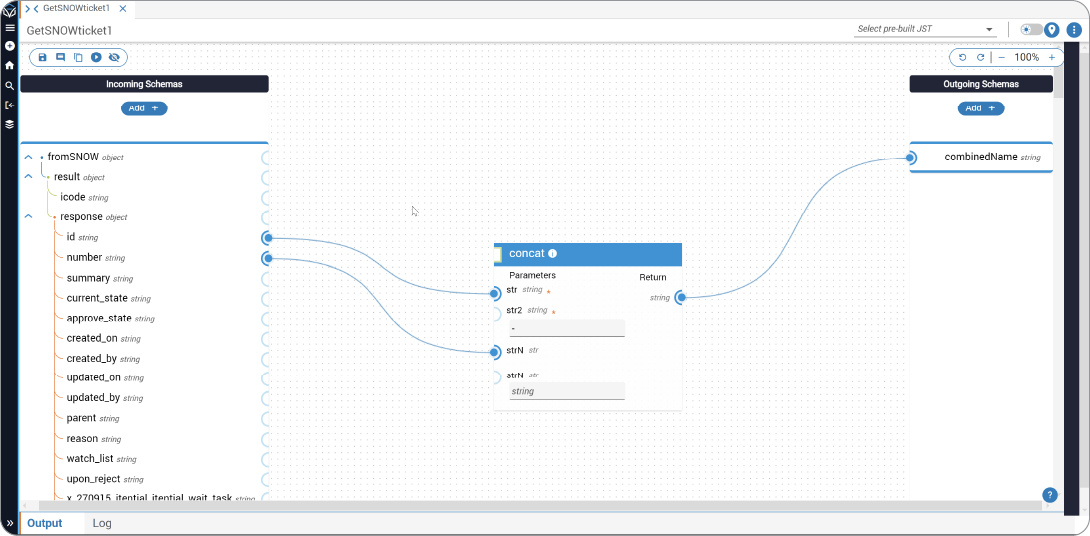
By making data transformation this simple, we’re giving network engineers the tools they need to move a lot faster, orchestrating even the most complex workflows across many different systems with ease. And, as teams continue to use Itential, every data transformation they build is added to a central asset library where others (with the right access) can reuse or modify them to suit their own workflows — maximizing the impact of work that’s already been done.
To orchestrate network change processes end-to-end, you need to be able to automate data transformation between any data formats to enable coordination between API calls to any set of systems or platforms. That’s what teams get with the Itential Automation Platform.
Here’s a demo on data transformation where you can see it step by step. You can also try it for yourself here! And for a full breakdown of our data transformation capabilities and JSON data model, see this page.

